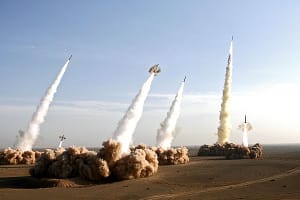U.S. E-mini S&P 500 futures fell more than 1.5% in early morning trading, erasing all gains for the week and turning decisively into negative territory.
US stocks are set to decline today following Israel’s unprecedented attack on Iran, which has reignited concerns about surging energy prices.
This could fuel inflationary pressures and keep interest rates elevated for an extended period.
Israel’s large-scale strikes on Iranian facilities and senior leadership risk triggering a significant Iranian response that could target economic interests across the region, potentially disrupting the global economy.
According to The New York Times, Tehran might move to close the strategic Strait of Hormuz, threatening oil and gas shipments and global shipping lanes—an action that could also drag the U.S. directly into the conflict.
Furthermore, the Financial Times cites experts who warn that Iran could target vital oil infrastructure in the region — home to some of the world’s largest fields — in an effort to shift the cost of Israel’s actions onto global markets.
Such scenarios could push crude prices sharply higher, possibly exceeding $100 or even $130 per barrel, according to JPMorgan estimates.
The inflationary risks tied to surging energy costs could further complicate the Federal Reserve’s policy outlook. The Fed, which has so far adopted a cautious stance toward cutting rates, may now face even greater pressure to keep borrowing costs high, adding further strain to the U.S. economy. The Wall Street Journal’s chief economics commentator, Greg Ip, argued that it was time for the Fed to pivot from fighting inflation to supporting growth given signs of labor market softness. But today’s geopolitical shock could leave policymakers more confused and markets more unsettled.
For now, markets are still pricing in a total of 50 basis points in rate cuts by year-end, according to CME FedWatch Tool data. Next week’s Fed statements, following its rate decision, could help shape expectations further as investors weigh these conflicting forces.






Leave a Comment